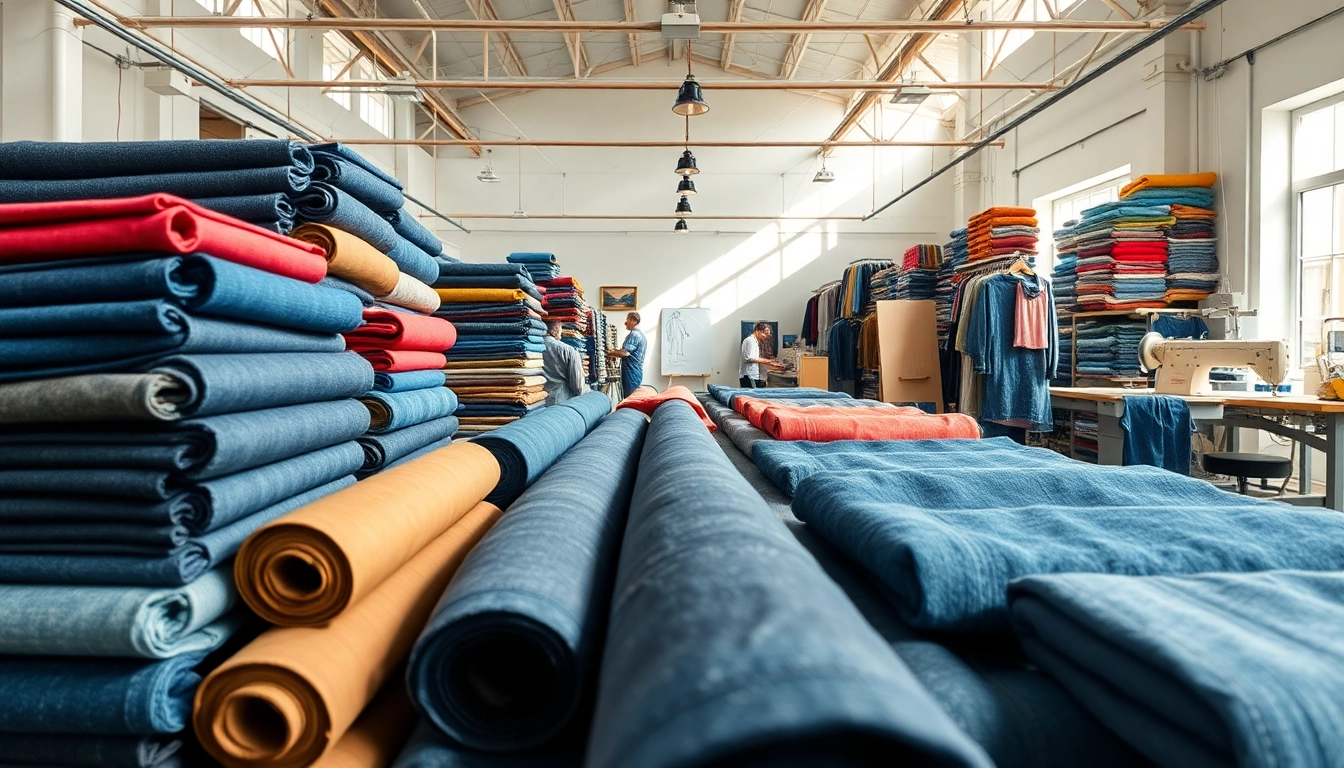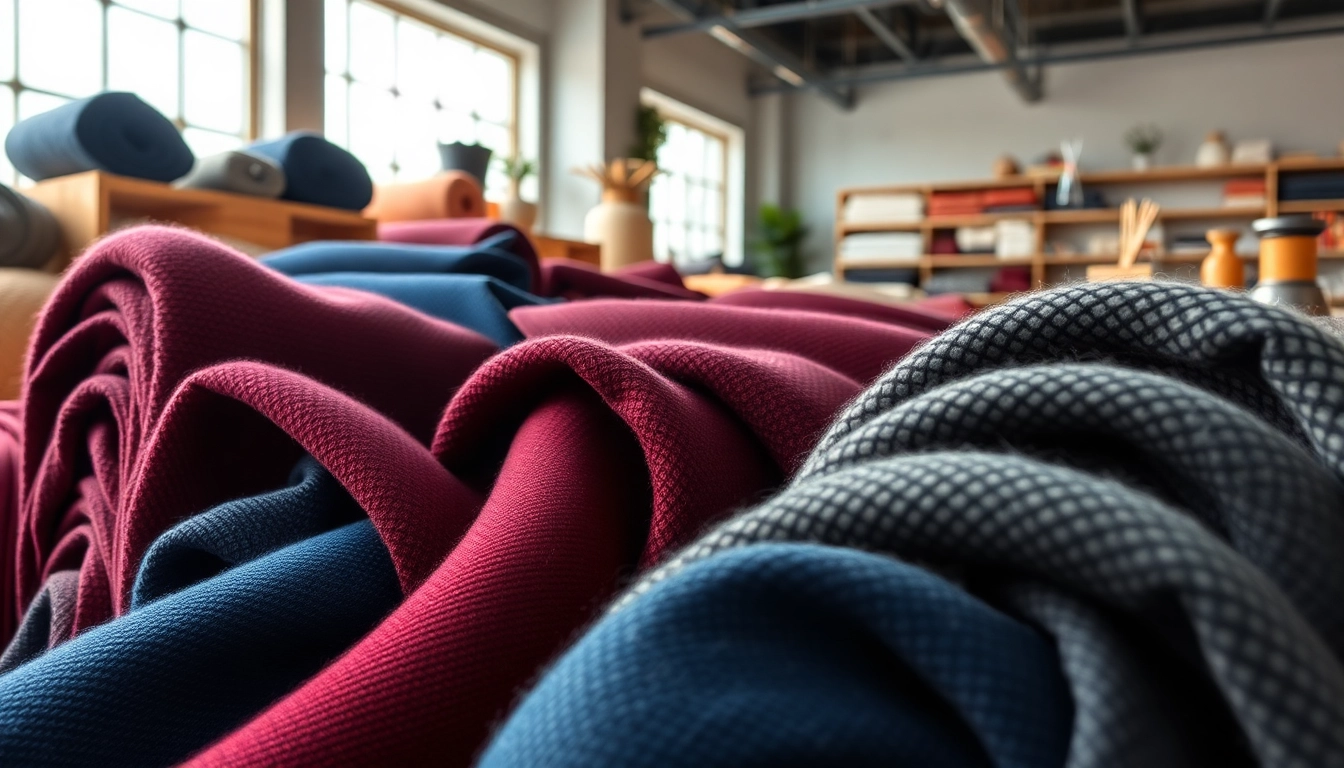The Importance of Selecting Quality Jeans Fabric Manufacturers
In the world of fashion, few materials have stood the test of time like denim. Renowned for its durability, comfort, and style versatility, denim has become a staple in wardrobes worldwide. Yet, the key to producing high-quality denim lies in the selection of jeans fabric manufacturers. Understanding the intricacies of fabric types, quality standards, and the economic implications of these choices is crucial for designers, retailers, and consumers alike. This article delves into these aspects, exploring the vital role of manufacturers in the denim supply chain.
Understanding Fabric Types and Their Uses
Denim fabric is not just a singular type; it’s a diverse category with various substrates and weaves that cater to different styles and uses. Traditional denim is constructed using twill weaving, which gives it that iconic diagonal ribbing. However, the fabric has evolved, and today’s offerings include:
- Stretch Denim: Incorporating elastane, stretch denim provides added comfort and flexibility, making it ideal for fitted styles like skinny jeans.
- Selvedge Denim: Known for its high-quality and craftsmanship, selvedge denim is woven on traditional shuttle looms, resulting in a clean edge that prevents fraying.
- Raw Denim: This type of denim is unwashed and untreated, leading to unique fading patterns that appeal to denim enthusiasts.
- Sustainable Denim: Increasingly, manufacturers are offering denim made from organic cotton or recycled materials, catering to the eco-conscious consumer.
Each type of denim offers unique qualities, making it essential for manufacturers to align their products with market needs and consumer preferences.
Quality Standards in Jeans Fabric Production
Quality in denim fabrication does not happen by chance. It’s grounded in strict adherence to industry standards and practices. Key quality indicators include:
- Fabric Weight: Measured in ounces per square yard, the weight of denim significantly influences its durability and feel. Common weights range from 10 oz for lightweight jeans to over 16 oz for heavier workloads.
- Weave Density: A tighter weave typically provides more durability while influencing the fabric’s aesthetic and comfort.
- Colorfastness: The ability of the dyed fabric to retain its color during washing and wear is paramount, especially for darker shades.
- Finishing Techniques: Processes such as stone washing or enzyme treatment can enhance the texture and appearance, but they must be executed without compromising the fabric’s integrity.
Manufacturers who prioritize these quality indicators are better positioned to satisfy the evolving demands of the market.
The Economic Impact of Denim Fabric Choices
The choice of denim fabric has far-reaching economic implications. From production costs to retail pricing, the fabric selected can dictate the entire value chain. For instance, premium raw materials may increase the manufacturing cost but can also justify a higher retail price, enabling brands to maintain healthy profit margins.
Furthermore, decisions around sourcing materials—whether domestically or from international suppliers—affect not just a company’s bottom line but also its carbon footprint and community impact. Investing in ethical sourcing and production practices may enhance brand image and loyalty, reflecting increasingly conscientious consumer tendencies.
Global Trends in the Jeans Fabric Industry
The jeans fabric industry is influenced by various global trends that shape how manufacturers operate and how consumers engage with denim products. Understanding these trends is key to remaining competitive in this ever-evolving market.
Market Demand Analysis for Jeans Fabrics
The demand for denim fabrics is closely tied to fashion cycles and economic conditions. While traditional jeans remain consistently popular, there is a growing demand for specialized fabrics, such as those designed for athleisure wear or work-specific applications. Market analysts suggest that the rise of e-commerce and direct-to-consumer sales channels has facilitated the rapid distribution of niche denim products, catering to a broader audience.
Shifts in Consumer Preferences and Sustainability
Today’s consumers are more informed than ever, often prioritizing sustainability and ethical practices in their purchasing decisions. As a result, manufacturers that can demonstrate a commitment to environmentally friendly processes—whether through sustainable sourcing of cotton, water conservation methods, or ethical labor practices—position themselves favorably in the market. This shift has encouraged many denim producers to adopt sustainable practices, appealing to a demographic that increasingly values transparency and green practices.
Regional Production Highlights in Denim Fabrics
Global production of denim fabric is not uniform; various regions have developed unique strengths and specialties. For example:
- North America: Known for its historical significance in denim production, it remains a hub for high-quality and innovative denim manufacturing.
- Asia: Countries like China and Bangladesh dominate in volume production, often specializing in cost-effective solutions to meet global demand.
- Europe: European manufacturers frequently focus on high-end, artisanal denim, cultivating a robust market for premium products.
Understanding these regional strengths allows brands to make informed decisions regarding sourcing and partnerships with jeans fabric manufacturers.
Key Features of Top Jeans Fabric Manufacturers
The most successful jeans fabric manufacturers share several key features that set them apart in a competitive marketplace.
Innovative Techniques in Denim Fabric Production
Innovation is vital in the denim industry, particularly as consumer demands shift. Leading manufacturers are adopting techniques such as:
- Digital Printing: This allows for intricate designs and patterns to be printed directly onto denim, offering a new level of customization.
- Laser Technology: Used for both distressing and finishing, laser technology significantly reduces water and chemical usage, enhancing sustainability.
- 3D Knitting: This technique is revolutionizing the way denim is created, offering more fitting options and reducing waste associated with traditional cutting methods.
By embracing these innovative methods, manufacturers not only enhance their product offerings but also improve efficiency and sustainability.
Commitment to Sustainability and Ethical Practices
As the demand for sustainable fashion increases, leading denim manufacturers are prioritizing ethical practices. This includes:
- Recycled Materials: Utilizing recycled denim and other fibers not only reduces waste but also conserves resources.
- Water Conservation: Implementing processes that use less water during manufacturing, such as waterless dyeing technologies.
- Fair Labor Practices: Ensuring that production facilities uphold fair wages and safe working conditions fosters loyalty and a positive brand image.
Manufacturers focused on such practices benefit from the growing market of consumers who place value on sustainability.
Comparative Analysis of Manufacturing Processes
Understanding the differences in manufacturing processes is crucial for brands when selecting their suppliers. Key factors include:
- Production Capacity: The ability of a manufacturer to handle large-scale orders without compromising quality is essential, especially for brands with fluctuating demands.
- Lead Times: Quick turnaround periods can be a significant advantage in responding to market trends, especially in the realm of fast fashion.
- Customization Options: The ability to accommodate bespoke orders is increasingly important as brands look to differentiate themselves.
Manufacturers need to demonstrate flexibility and responsiveness to cater to the dynamic needs of their clients.
Challenges Facing Jeans Fabric Manufacturers Today
Despite the lucrative opportunities in denim production, manufacturers face several challenges that can hinder success. Addressing these obstacles is critical for sustained growth in the industry.
Resource Sourcing and Material Quality Issues
Sourcing high-quality raw materials is a cornerstone of excellent denim production. However, challenges such as fluctuating cotton prices, climate change affecting crop yields, and local regulations can significantly impact operations. Manufacturers must establish robust supply chains and maintain relationships with trusted suppliers to mitigate these risks.
Adapting to Fast Fashion Demands
The fast fashion industry demands quick turnarounds and trend responsiveness, often pushing manufacturers to their limits. Balancing the need for speed with quality can lead to compromises. Manufacturers must develop agile production systems and employ technology to optimize efficiency without sacrificing quality.
Technological Advances in Fabric Manufacturing
As technology progresses, manufacturers are challenged to keep pace. New machinery, sustainable practices, and innovative techniques require ongoing investment and training. Embracing these advancements presents both a financial burden and a pathway to competitive advantage.
The Future of Jeans Fabric Manufacturers in a Competitive Landscape
Looking ahead, the jeans fabric industry is poised for transformation as it embraces new technologies and market dynamics. Manufacturers will need to harness emerging trends to thrive in this competition.
Emerging Technologies and Automation in Production
Automation is set to revolutionize denim production. Robotics and AI can enhance efficiency, reduce labor costs, and improve accuracy in manufacturing processes. By investing in such transformative technologies, manufacturers will not only streamline operations but also maintain competitive pricing.
Strategies for Growth and Market Positioning
As fashion trends evolve and consumer preferences shift, manufacturers must continuously refine their positioning. Strategies may include diversifying product ranges, expanding into new markets, or enhancing direct-to-consumer offerings to foster brand loyalty.
Investment Opportunities in Denim Fabric Innovations
The quest for more sustainable and efficient production methods presents fertile ground for investment. Innovators in textile technology, those focusing on eco-friendly manufacturing processes, and players in the recycling sector are poised for growth. Manufacturers that invest in these areas will not only future-proof their businesses but also contribute positively to the environment.



